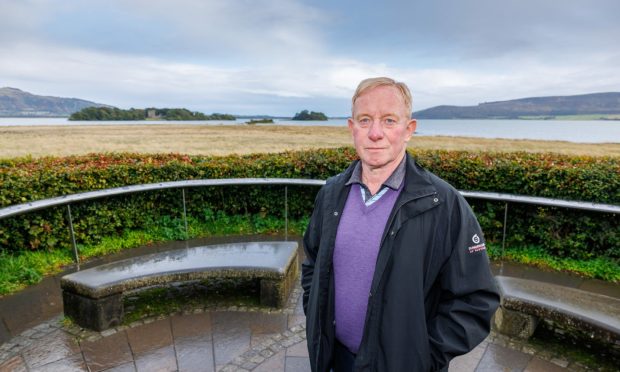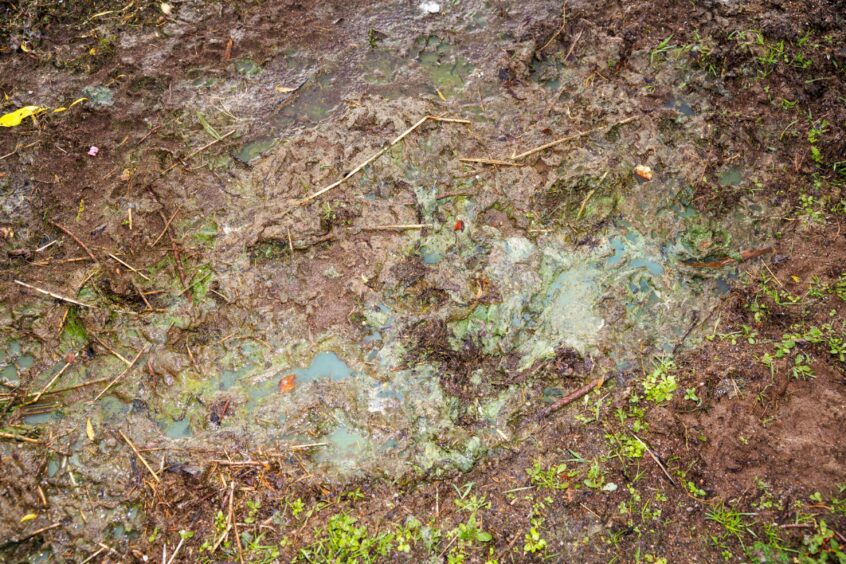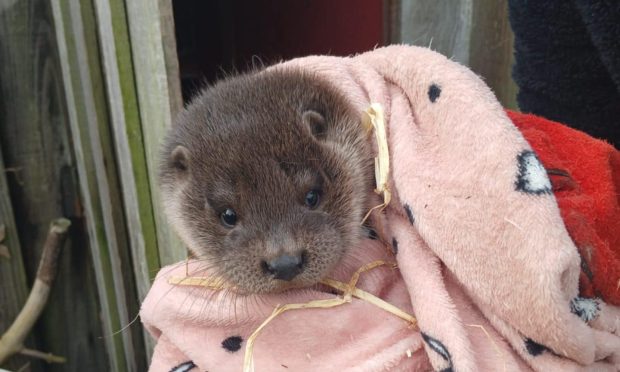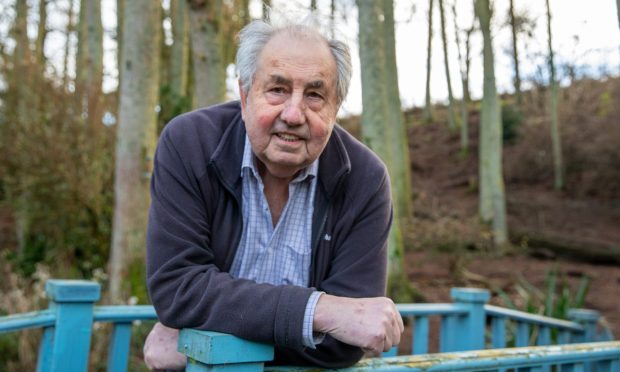Loch Leven wildlife bosses are “extremely concerned and disappointed” over the latest spill of “raw sewage” into the loch.
Human waste flowed from the Scottish Water treatment plant into the loch water and covered trails in September during heavy rain.
Environment agency NatureScot branded it a “serious pollution incident”.
The Courier has seen correspondence where an experienced worker at the loch warned of human waste “pouring out of the sewage works”.
“I don’t think this is acceptable,” they said.
“Cyclists are cycling through raw sewage and dogs are walking through it.”
How did sewage end up in Loch Leven?
Scottish Water became aware of a blocked tunnel downstream from the Kinross Waste Water Treatment Works (WWTW) on September 8.
A Scottish Water spokesperson said: “The screen had become blocked with debris from the storm, forcing discoloured water to flow over a footpath. A member of our team attended to clear the screen and restore normal flow.”
The treatment works empty into the loch during heavy rain, rather than flooding homes.
But this redirection of sewage can lead to a build up of phosphorus in the loch, contributing to toxic algae blooms. These pose a danger to swimming dogs, humans and wildlife in the water.
Kinross Lib Dem councillor Willie Robertson said: “It’s a big concern.
“A lot of people let their dogs swim in the loch. Children paddle and play in it.
Visitors don’t realise the danger it can pose.”
William Robertson, Lib Dem councillor
“How can you tell somebody that the water at your local beauty spot is potentially dangerous to swim in?
“Visitors don’t realise the danger it can pose.
“We need to take a much more robust approach to this. The people that are meant to protect the loch need to do so.”
Why does Loch Leven sewage keep overflowing?
Mr Robertson said the current sewage system means that Scottish Water have no alternative but to allow large quantities of untreated sewage to go straight into Loch Leven.
“I was told that it was getting dealt with.
“Scottish Water can only do so much with the money they’re given, What they need is investment from the Scottish Government.”
Climate change experts at Historic Environment Scotland have predicted that Scotland will continue to have “more intense rainfall events.” The country could become as much as 8% wetter by 2050.
Mr Robertson repeated his plea for a weight limit on the amount of phosphorus allowed in the loch each year.
More human waste in the water leads to higher phosphorus levels. That can harm species that live in the loch.
“We know what the sources of phosphorus are. We need to take steps to limit the amount and improve water quality in the loch.
“Loch Leven is so shallow, this makes it very sensitive. I’m frightened it may reach a tipping point.”
‘Extremely disappointed’
A spokesperson for NatureScot has said: “We are extremely concerned and disappointed about a serious pollution incident at Loch Leven National Nature Reserve.
“This kind of pollution could have a serious impact on the important habitats of the loch, its aquatic vegetation and wildlife.
“Our staff worked with the regulator Sepa and Scottish Water in their investigation of this incident and continue to monitor the impact on the ground.”
Nature Scot has been working with the council and other groups (including Sepa) to improve the water quality at Loch Leven for nearly thirty years.
Sepa officers are working with Scottish Water to identify those parts of Scotland where overflowing sewers are having the greatest impact.
We asked MSP Máiri McAllan for comment.
A Scottish Government spokesperson said: “Scottish Water has already invested £686 million on improvements to infrastructure and treatment works since 2010 and its Improving Urban Waters Routemap commits to a further £345-470 million during the regulatory period 2021-27.














Conversation